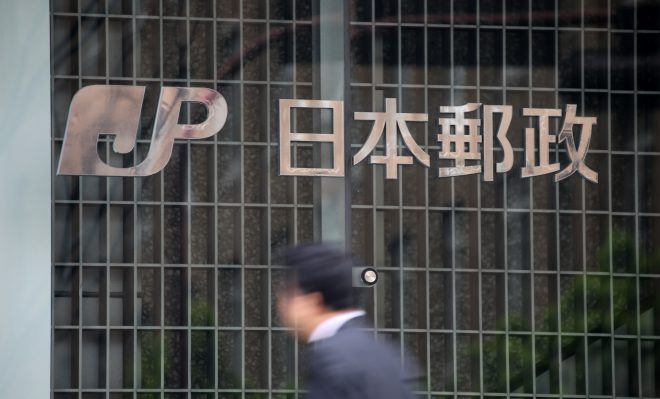10 years after privatization, Japan Post continuing struggle to boost earnings
October 4, 2017
TOKYO- Japan Post Holdings Co. is continuing its struggle to boost its earnings 10 years after the launch of the privatization process for the postal service group.
Although the holding company and its two core financial units went public about two years ago, the Japanese government still owns more than half of the parent company, continuing to limit the freedom of the group's management.
Previously, Japan's three postal operations--mail, "yucho" savings and "kampo" insurance--had been managed by the Posts and Telecommunications Ministry, which was remade into the Internal Affairs and Communications Ministry in January 2001 as part of the large-scale realignment of the country's central government agencies.
After a public corporation, called Japan Post, was created in April 2003 to take over the postal operations, Japan Post Holdings was launched on Oct. 1, 2007, to mark the beginning of the privatization process of the operations although all shares in the company were held by the government.
A planned sale of some Japan Post Holdings shares was suspended after the now-defunct Democratic Party of Japan took over the reins of government from the Liberal Democratic Party in September 2009.
But the holding company and the two financial units--Japan Post Bank and Japan Post Insurance Co. --simultaneously listed their stocks on the Tokyo Stock Exchange in November 2015, after the LDP returned to power in December 2012.
Following an additional share sale in September this year, the government's equity stake in Japan Post Holdings fell to a level slightly below 60 percent.
The group, however, has faced difficulties strengthening its management base, contrary to expectations that the privatization would boost its earnings.
The two financial service subsidiaries, which earn most of the group's profits, have suffered declines in their investment returns due to plunges in domestic interest rates reflecting the Bank of Japan's negative interest rate policy, introduced in February 2016. Jiji Press
Latest Videos
- THE UNTOLD STORY EXPERT INSIGHTS INTO THE UKRAINE
- NEGOTIATING A NEW ORDER US RUSSIA TALKS ON UKRAIN
- Ukraine: A Pawn in the Geopolitical Game? Will Trump Intervene?
- US VP VANCE CRITICIZES EUROPEAN DEMOCRACIES AT MUNICH SECURITY CONFERENCE
- UNCOVERING THE WEB OF DECEIT: CIA INFILTRATION OF THE MEDIA
- SHIFTING SANDS: TULSI GABBARD’S CONFIRMATION AND THE EVOLVING GLOBAL LANDSCAPE
- FAUCI SCANDAL: A THREAT TO GLOBAL HEALTH AND DEMOCRACY






